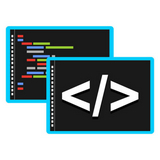
go语言通过goroutine(协程)和channel(通道)提供了一种强大的并发编程模型。goroutine是轻量级的执行线程,而channel则是goroutine之间进行通信和同步的桥梁。理解如何高效地利用通道在多个协程间传递数据,是构建高性能并发应用的关键。
在一个典型的并发场景中,一个协程可能需要从多个不同的源(即不同的通道)接收数据。Go提供了几种策略来处理这种情况。
最直接的方式是按顺序从每个通道接收数据。这种方法适用于你需要确保所有指定输入都已到达,并且它们的处理顺序是固定的场景。
package main
import (
"fmt"
"time"
)
func routine1(ch1, ch2 <-chan int) {
fmt.Println("Routine1: 等待从ch1和ch2接收数据...")
// 顺序接收:先从ch1接收,再从ch2接收
cmd1 := <-ch1
fmt.Printf("Routine1: 从ch1接收到数据: %d\n", cmd1)
cmd2 := <-ch2
fmt.Printf("Routine1: 从ch2接收到数据: %d\n", cmd2)
fmt.Println("Routine1: 成功接收并处理了所有数据。")
}
func routine2(ch chan<- int) {
time.Sleep(1 * time.Second) // 模拟处理时间
ch <- 100
fmt.Println("Routine2: 向ch1发送了数据。")
}
func routine3(ch chan<- int) {
time.Sleep(2 * time.Second) // 模拟处理时间
ch <- 200
fmt.Println("Routine3: 向ch2发送了数据。")
}
func main() {
command12 := make(chan int)
command13 := make(chan int)
go routine1(command12, command13)
go routine2(command12) // routine2向command12发送
go routine3(command13) // routine3向command13发送
// 确保所有协程有时间执行
time.Sleep(3 * time.Second)
fmt.Println("主协程结束。")
}注意事项: 这种方法是阻塞的。如果某个通道长时间没有数据发送,接收协程将会一直等待,直到数据到达。这可能导致死锁或性能瓶颈,尤其是在不确定哪个通道会先有数据的情况下。
当一个协程需要从多个通道中“非阻塞”地接收第一个可用的数据时,select 语句是理想的选择。select 会阻塞直到其中一个case可以执行,如果多个case都准备就绪,select 会随机选择一个执行,保证公平性。
立即学习“go语言免费学习笔记(深入)”;
package main
import (
"fmt"
"time"
"math/rand"
)
func routine1Select(ch1, ch2 <-chan int) {
fmt.Println("Routine1Select: 等待从ch1或ch2接收数据...")
for i := 0; i < 5; i++ { // 循环接收5次
select {
case cmd1 := <-ch1:
fmt.Printf("Routine1Select: 从ch1接收到数据: %d\n", cmd1)
// 处理来自ch1的数据
case cmd2 := <-ch2:
fmt.Printf("Routine1Select: 从ch2接收到数据: %d\n", cmd2)
// 处理来自ch2的数据
case <-time.After(500 * time.Millisecond): // 添加超时机制
fmt.Println("Routine1Select: 等待超时,未收到数据。")
}
}
fmt.Println("Routine1Select: 接收循环结束。")
}
func routine2Sender(ch chan<- int, name string) {
for i := 0; i < 3; i++ {
time.Sleep(time.Duration(rand.Intn(1000)) * time.Millisecond) // 随机延迟
data := rand.Intn(100)
ch <- data
fmt.Printf("%s: 发送了数据 %d\n", name, data)
}
// close(ch) // 在实际应用中,发送方通常负责关闭通道
}
func main() {
command12 := make(chan int)
command13 := make(chan int)
go routine1Select(command12, command13)
go routine2Sender(command12, "Routine2")
go routine2Sender(command13, "Routine3")
time.Sleep(5 * time.Second) // 确保有足够时间观察输出
fmt.Println("主协程结束。")
}select 语句的优势:
Go语言的通道设计本身就支持多个Goroutine向同一个通道发送数据,以及多个Goroutine从同一个通道接收数据。这意味着你可能不需要为每个发送方或接收方都创建独立的通道。
package main
import (
"fmt"
"time"
)
func worker(id int, messages <-chan string) {
for msg := range messages { // 使用range循环从通道接收数据,直到通道关闭
fmt.Printf("Worker %d 接收到: %s\n", id, msg)
time.Sleep(100 * time.Millisecond) // 模拟处理
}
fmt.Printf("Worker %d 退出。\n", id)
}
func main() {
sharedChannel := make(chan string)
// 多个发送方
go func() {
for i := 0; i < 5; i++ {
sharedChannel <- fmt.Sprintf("来自发送方A的消息 %d", i)
time.Sleep(50 * time.Millisecond)
}
}()
go func() {
for i := 0; i < 5; i++ {
sharedChannel <- fmt.Sprintf("来自发送方B的消息 %d", i)
time.Sleep(70 * time.Millisecond)
}
}()
// 多个接收方
go worker(1, sharedChannel)
go worker(2, sharedChannel)
// 确保所有消息被处理,并等待一段时间让协程完成
time.Sleep(2 * time.Second)
close(sharedChannel) // 关闭通道,通知接收方不再有数据
time.Sleep(500 * time.Millisecond) // 等待接收方退出
fmt.Println("主协程结束。")
}这种模式可以大大简化程序的通道管理,但需要注意确保通道在所有发送完成后被关闭,以便接收方能够优雅地退出(通过for range循环)。
在请求-响应模式中,一个常见的Go惯用法是在发送的消息结构体中包含一个“回复通道”(reply channel)。这允许请求方指定一个私有的通道,用于接收特定于该请求的响应。
package main
import (
"fmt"
"time"
)
// Command 定义了请求消息的结构
type Command struct {
Cmd string // 命令类型
Value int // 命令值
Reply chan<- int // 回复通道,用于接收处理结果
}
// routine1 作为服务处理者
func routine1Processor(commands <-chan Command) {
for cmd := range commands {
fmt.Printf("处理器接收到命令: %s, 值: %d\n", cmd.Cmd, cmd.Value)
// 模拟处理时间
time.Sleep(100 * time.Millisecond)
var status int
if cmd.Cmd == "doSomething" && cmd.Value%2 == 0 {
status = 200 // 成功
} else {
status = 400 // 失败
}
// 将处理结果发送回请求方的回复通道
cmd.Reply <- status
fmt.Printf("处理器完成命令: %s, 返回状态: %d\n", cmd.Cmd, status)
}
fmt.Println("处理器退出。")
}
// routine2 作为请求发送者
func routine2Requester(commands chan<- Command) {
fmt.Println("请求者2: 准备发送请求...")
replyChan := make(chan int) // 为当前请求创建私有回复通道
req := Command{Cmd: "doSomething", Value: 42, Reply: replyChan}
commands <- req // 发送请求
fmt.Println("请求者2: 已发送请求,等待回复...")
status := <-replyChan // 等待并接收回复
fmt.Printf("请求者2: 收到回复状态: %d\n", status)
close(replyChan) // 关闭回复通道
}
// routine3 作为另一个请求发送者
func routine3Requester(commands chan<- Command) {
fmt.Println("请求者3: 准备发送请求...")
replyChan := make(chan int) // 为当前请求创建私有回复通道
req := Command{Cmd: "calculate", Value: 17, Reply: replyChan}
commands <- req // 发送请求
fmt.Println("请求者3: 已发送请求,等待回复...")
status := <-replyChan // 等待并接收回复
fmt.Printf("请求者3: 收到回复状态: %d\n", status)
close(replyChan) // 关闭回复通道
}
func main() {
commandChannel := make(chan Command) // 主命令通道
go routine1Processor(commandChannel)
go routine2Requester(commandChannel)
go routine3Requester(commandChannel)
// 确保所有操作完成
time.Sleep(1 * time.Second)
close(commandChannel) // 关闭主命令通道,通知处理器退出
time.Sleep(500 * time.Millisecond)
fmt.Println("主协程结束。")
}这种模式的优点在于:
Go语言的并发模型以其简洁和高效而闻名。当需要一个协程从多个来源接收数据时,可以根据具体需求选择:
此外,理解Go通道的固有特性——支持多读写方,以及掌握在消息中嵌入回复通道的模式,能帮助开发者设计出更简洁、更健壮、更易于维护的并发程序。通过合理地选择和组合这些通信模式,可以有效地解决Go语言并发编程中的各种挑战。
以上就是Go语言并发编程:多源输入与灵活通信模式的详细内容,更多请关注php中文网其它相关文章!

编程怎么学习?编程怎么入门?编程在哪学?编程怎么学才快?不用担心,这里为大家提供了编程速学教程(入门课程),有需要的小伙伴保存下载就能学习啦!

Copyright 2014-2025 https://www.php.cn/ All Rights Reserved | php.cn | 湘ICP备2023035733号